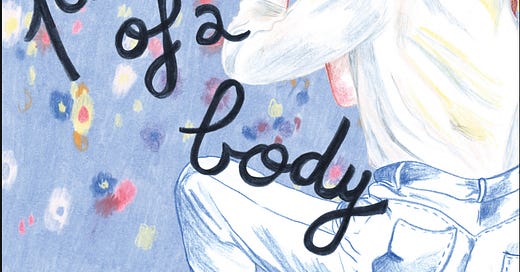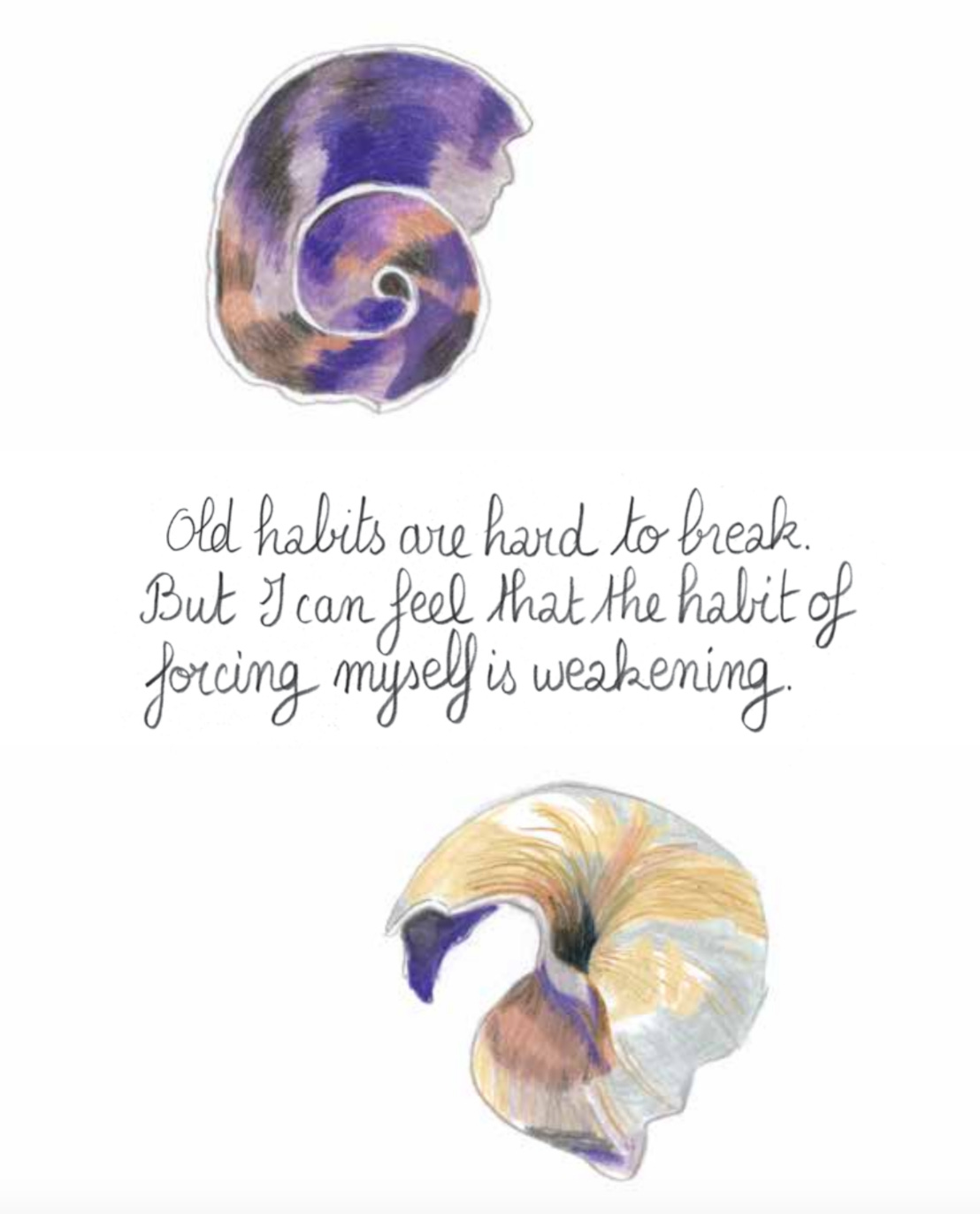Asynchronous Book Club: Portrait of a Body by Julie Delporte
"I was a little shocked by how normal it all felt. 'Abnormal' was everything that had come before."
When we taught Autobiographix at the University of New Mexico, we taught This Woman’s Work by Julie Delporte, which was a text that always inspired our students with its dreamy lyricism, handmade feel, and honest explorations of womanhood and the artist’s life. We were excited to see Drawn & Quarterly’s 2024 catalogue included a new book by Delporte–her drawings are always stunning, and Portrait of a Body promised to build off of the foundation set by This Woman’s Work.
If you liked reading Gender Queer by Maia Kobabe, you will likely also enjoy this coming out story. Alternating color pencil drawings with neat cursive paragraphs written in pencil, this radically honest and straightforward book sometimes feels like reading a field sketchbook studying the tangible collections that could become metaphors for queerness–whether those are rocks, sea shells, flowers, or film stills. Like in her previous works, Delporte finds resonance in the women thinkers and artists who have come before her, showing us a map of her inspirations and a framework of her feminism. Delporte does not hold back, yet the audience finishes the book wanting more rumination regarding the revelations shared.
1. How do the text and the images inform one another and work to create a cohesive narrative? How and when do the images change objects to create new metaphors?
2. On p 36-37, we see that she is reading different books by Deborah Levy–her “living autobiographies”-- we also get allusions to other books, films, (and works?) throughout. What would be on your nightstand in an essay about identity?
3. Delporte evokes a field sketchbook of both literal objects (rocks, plants etc.) and of her psyche. What would be in your field sketchbook–literally and more figuratively? Draw a few renderings of it…
4. Is there a sense of where Julie feels the most comfortable in her life? Where/when she has been the most “real”? What determines this for her?
5. We, the readers, are not clear if there is an image of Julie - she never shows herself–or does she? Can you pick out her avatar in the book? Does the lack of recognizable facial features make her stand in for an “everywoman”? Or does it force us to put ourselves into her, forcing a point of connection?
6. Despite this work’s inner-facing nature, how engaged or distanced did you feel with the memoir? Where did you find the most connection and what would you want to know more of (if anything)?
Creative Activity: Write about a personal belief, experience, moment when you felt like your true self. Next, on separate pieces of paper, draw some stills from a favorite movie, or draw a sequence of events from a recent dream. Cut apart the writing to make separate chunks of text. Intersperse these with the images of the movie or dream.









I have been wanting to read this book for a while! Once I have a chance to read it I will be coming back to this post!
these look like great books—put them on order at my library!